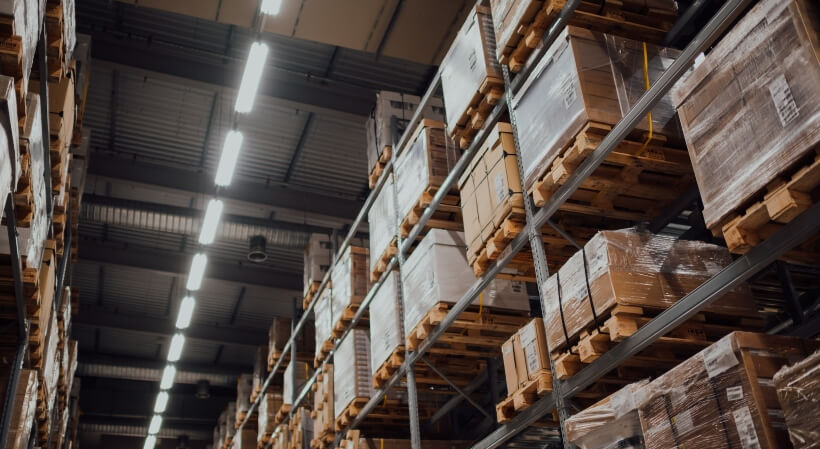Issues in a supply network ripple throughout an entire organization, and these systems’ interconnected, multiparty nature makes them prone to disruption. This means two things for entrepreneurs: supply chain issues will almost certainly arise, and it pays to prepare for them.
Supply chain disruptions have impacted 79% of small and medium businesses since the onset of the COVID-19 pandemic. Given how common these issues are and how costly they can be, startups must prepare to deal with supply chain woes. Learning common problems and how to manage them will put entrepreneurs at a competitive advantage when disruption arises.
1. Supply Shortages
Stock-outs are some of the most common supply chain issues. Labor shortages, temporary shutdowns, geopolitical tensions and many other factors can cause supply to fall below demand, especially amid shifting consumer trends.
Shortages are costly and common, as consumer packaged goods companies suffered $82 billion in missed revenue in 2021 from stock-outs.
How to Manage It
Visibility is the key to preventing stock-outs. The more transparency a company has with its suppliers and logistics partners, the earlier it can predict and respond to shortages. Internet of Things (IoT) systems are the ideal solution, as they offer real-time insights into stock levels and shipment locations.
Keeping safety stocks and distributing sources to remove single dependencies will also help. While these practices don’t align with popular lean ideologies, they make supply chains more resilient.
2. The Bullwhip Effect
Many supply chains grapple with a related but distinct issue: the bullwhip effect. This phenomenon occurs when a company overreacts to shortages and orders too much, leaving it with a surplus. As supply shortages and demand spikes become more common, so does the bullwhip effect.
How to Manage It
As with stock-outs, transparency is the answer to addressing the bullwhip effect. Businesses should maintain high visibility with suppliers, downstream supply chain partners and customers. The bullwhip effect is ultimately a matter of demand distortion, so you need a firm, reliable understanding of your market and its changes.
Artificial intelligence (AI) can help you gain that understanding. Predictive analytics models can make remarkably accurate predictions based on past trends, and real-world use cases support this. Furniture giant IKEA raised its demand forecasting accuracy from 92% to 98% by implementing an AI-based system.
Also Read: 3 Critical Trucking Industry Challenges — And How to Meet Them
3. Fleet Management Issues
Transportation is another key factor in the supply chain, so transport-related issues deserve attention. Truck fleets have a massive impact on lead times, stock availability and costs, but many companies lack insight into and control over them.
This disconnect leaves businesses vulnerable to disruptions from breakdowns, traffic and road accidents.
How to Manage It
IoT systems and employee training are your two best assets to improve fleet management. Telematics platforms can offer real-time information about truck locations to inform better scheduling and hold drivers accountable for unsafe driving. Consequently, you can enable faster deliveries and avoid the roughly $463 billion companies spend annually on litigation from traffic accidents.
Businesses can also use telematics to track truck maintenance schedules, preventing breakdowns. More in-depth training for drivers will help minimize accidents and address labor challenges.
4. Cyberattacks
Addressing many supply chain issues requires increased digitization. While that’s an essential shift, it also introduces the risk of cybercrime. A stunning 98% of companies in 2022 experienced a breach from another party in their supply chain, so managing these vulnerabilities is essential.
How to Manage It
The first step to preventing supply chain cyberattacks is holding vendors and third parties to a higher standard. Require proof of reliable cybersecurity measures before sharing data or granting digital access to another party. Even then, only give each company as much access as needed to perform their roles.
Internal protections are also necessary. Use updated cybersecurity software, train all employees on security best practices, host IoT devices on separate networks from more sensitive systems and restrict access privileges as much as possible. It’s also a good idea to keep encrypted backups of all mission-critical data.
5. Workforce Shortages
Entrepreneurs should also expect to grapple with labor shortages in the supply chain. The trucking industry has extremely high turnover rates, and warehouses often struggle to hire enough employees to meet rising demand. Even if these shortages happen outside of your organization, they still impact you by limiting your suppliers’ productivity.
How to Manage It
Automation is the most straightforward solution to worker shortages. Employing robots to work alongside human employees will help facilities meet higher demand despite low staffing levels.
Workforce management changes can help, too. Wage increases, flexible scheduling, career advancement opportunities, and rewards for top performance can boost productivity and morale to prevent turnover.
The SuN Takeaway
Some supply chain disruption is inevitable, but businesses can prevent and mitigate many issues with the right approach. The first step is learning what common obstacles you may face.
If you can prepare for these five challenges, you can get a head start on optimizing your supply chain. Your business can then thrive when competitors may struggle.
The post originally appeared on following source : Source link

